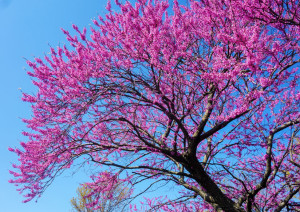Living in a Dry Climate? Identifying Plants that Thrive in a Drought Will Help You Enjoy Your Yard and Garden
 If you live in a dry climate, you can easily feel defeated trying to cultivate geraniums and roses. A region that gets little rain needs a different approach, and identifying plants that do well with minimal water will help you be successful.
If you live in a dry climate, you can easily feel defeated trying to cultivate geraniums and roses. A region that gets little rain needs a different approach, and identifying plants that do well with minimal water will help you be successful.
There are also some guiding principles that set the stage for a beautiful garden, even in a drought:
Choose plants that are drought-tolerant: This may seem obvious, but many people have a hard time letting go of the idea of a yard that is more suited to a temperate climate. Identifying plants that thrive in a dry landscape may take some getting used to, but once you see how beautifully they grow in your climate, you may be won over. Looking for flowering plants? Try Yankee Point along a path or Flowering Bladder Pod. The Western Redbed is a lovely flowering tree that is also a water sipper.
Group, don’t scatter: To conserve water and other resources, group plants and trees together. Think about which plants have similar irrigation needs, and plants that benefit from a little shade can be planted next to larger plants or trees. You’ll save on mulch and likely gain a spot to plant more ornamental varieties.
Mulch around trees: Give your trees a healthy blanket of mulch to retain moisture and protect them from heat, and also mulch landscape areas and borders where they meet turf sections.
Be strategic with grass: Surrender your vision of a rolling lawn with lush, green grass. Instead, use areas of turf where sports, picnics or other activities make it a necessity. Otherwise, your plans for your yard and garden should be compatible with the climate where you live. If you plant a lot of grass, be prepared that it will likely be mostly brown, not green.
Get your hands into the dirt: Your garden will thrive in soil that contains a high level of organic matter. It absorbs and retains moisture better and is more drought-tolerant. You can get your soil tested, but you can also start by adding more organic matter into your soil as it is.
Design an irrigation system: In a dry climate, a lot of water gets wasted trying to keep lawns looking fresh and green. Use a strategic approach to irrigation, making the most of every gallon, and grouping plants to minimize water waste.
Living in a dry climate doesn’t mean you’re doomed to a yard of prickly cacti and rocks. You can have a beautiful landscape filled with interesting plants, trees and flowers, but you’ll need a plan for how your group them and manage their water needs.
Identifying plants that do well in a drought is just part of the fun. Invest in Kincaid Plant Markers to complete the look of your dry-climate landscape and garden. You’ll appreciate their sturdy construction for year after year of marking your plants, and their classic design will complement your beautiful plans.
